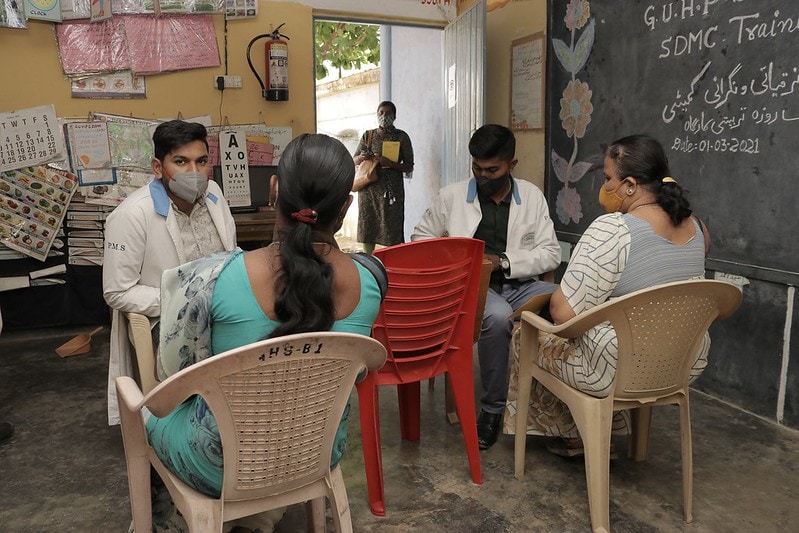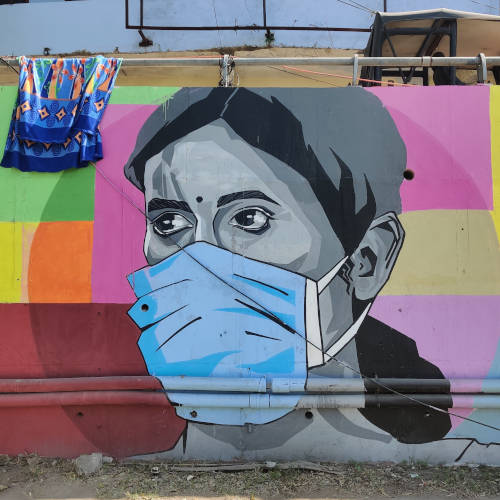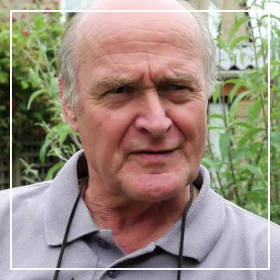An introductory note: In the short space of time that has elapsed since I first drafted this essay – in the last week of March 2021 – and the present (the beginning of May), when I am responding to the helpful criticism of a reviewer, India has moved into an unprecedented crisis. The country had seen COVID-19 infections peak in mid-September 2020, and by the beginning of 2021 it appeared that the pandemic was well under control. The idea that ‘herd immunity’ had been reached, certainly in the major cities, did not seem fanciful. But towards the end of February reports began to come in of case numbers increasing again. On April 4 the numbers of new cases of COVID-19 reported in one day passed 100 000, overtaking the earlier peak of September 2020. Ten days later the figure passed 200 000, and then on April 21 312 731 new cases were reported, the highest daily count ever recorded, in any country. The numbers have continued to increase (over 400 000 at the time of writing) and the projection of half a million new cases a day by mid-May begins to seem realistic. Images of people searching desperately for oxygen cylinders, reports of even middle class people who have access to top-class private health care being unable to find a hospital bed for a family member, and photographs of funeral pyres stretching as far as the eye can see, have been flashed across the world.
It has been reported internationally, too, that the Government of India headed by Narendra Modi was complacent about the pandemic being under control, and has been irresponsible in such ways as having allowed massive election rallies to take place in a number of states, some of them addressed by the prime minister himself, and without even a pretence of physical distancing or of face-masking. The city of Kolkata, where one in two people now are testing positive, has suffered in particular because of the numbers of such ‘super-spreader’ events. It has been recognised, too, that in spite of its earlier boast about India’s standing as the vaccine producer for the world, the Government of India’s own vaccination programme is in shambles. Modi’s government has been described by a normally sympathetic journalist as ‘missing in action’, and one academic commentator, Sumit Ganguly, writing in The Washington Post on April 29, has suggested, “the Modi government may have finally met its Waterloo”. This judgment seemed to be confirmed on May 2 with the news of the massive defeat inflicted on his party in the West Bengal state elections, in which Modi had campaigned so prominently. It is possible, therefore, that I should rephrase my original title to the past tense: ‘How did Modi do it?’ It is equally possible, however, that such is the degree of control that Modi exercises through the performance of leadership that I refer to as ‘decisionism’, together with the successful suborning of institutional checks on his exercise of power and his dominance of the media, he will weather this crisis. Not yet ‘Waterloo’, therefore. More ‘the retreat from Moscow’ – when, of course, thousands of French soldiers died by the way. The analysis that is offered here may prove not to be of only historical interest.
Images of people searching desperately for oxygen cylinders, reports of even middle class people who have access to top-class private health care being unable to find a hospital bed for a family member, and photographs of funeral pyres stretching as far as the eye can see, have been flashed across the world.
____________
Narendra Modi presents many different images of himself, at different times and for different audiences, sometimes for instance he is the ‘chaiwallah’ – the tea-boy – or the man from a humble background who has made it to the top in the face of opposition from the old elites who have denigrated him. Or sometimes he presents himself as a leader – in a smart business suit, perhaps – who is dedicated above all to national economic development. But it is the image of the protector of ‘the people’ (the Hindu people) that counts most. In this guise, he has won the trust of very many Indians, who have effectively ceded political power to him. There is good reason to believe that Modi won the 20I9 election through the military action that he took against Pakistan in February of that year, acting then as the ‘chowkidar’ – the watchman – looking after national security.
Then, and at other critical moments – certainly that of the abrupt lockdown of March 2020 as the Covid pandemic took off – Modi has exhibited what the German jurist, indefatigable critic of liberalism, and prominent member of the Nazi party Carl Schmitt, called ‘decisionism’. In the aftermath of the conflict, confusion and uncertainty of the years of the Weimar Republic, Schmitt and other German intellectuals sought to justify the decisive actions taken by Hitler and the Nazi party. What mattered, they believed, was the act of decision itself on the part of the political authority, and its validity was given by its style rather than by its content. In a society, like Germany in the 1930s, torn by deep ideological and social conflict, Schmitt argued that sovereign decision was desperately needed. Similarly, in present-day India the performance of bold and decisive leadership is what many people look for in circumstances perceived as drift and uncertainty – as Modi’s Bharatiya Janata Party characterized the later years of the last Congress-led government – or in the context of danger such as that presented by coronavirus. I emphasize ‘performance’ because of the striking resemblance between Hitler’s use of theatre and spectacle and Modi’s reliance on sheer drama to galvanize majoritarian support. Most immediately, we must ask how has decisionism worked in the context of the coronavirus pandemic?

In spite of the claims of India’s Home Minister , Amit Shah, that “India, under prime minister Modi, has fought the most successful battle against Covid-19 in the world” (reported in The Hindu, January 16 2021), the evidence – even before the onset of the current terrible crisis – clearly showed otherwise. Shortly after Shah spoke, the Lowy Institute published an index covering the performance of 98 countries in relation to six variables over the 36 weeks that followed each country’s one hundredth confirmed case of COVID-19. India was ranked 86th. At least this was eight places ahead of the United States, but it was still seventeen places lower than arch-enemy Pakistan. In common with India’s other South Asian neighbours, Pakistan had experienced fewer deaths, relative to population, than India. It is true, of course, as Narendra Modi and some of his ministers have regularly argued, that India has experienced relatively fewer deaths than wealthy western countries, but the comparison with the neighbouring countries – conveniently ignored – is more telling.
No thought had been given to the very many migrant workers employed in Indian cities, most of them paid only daily wages, or earning similarly small amounts from self-employment, or to what they would do when employment possibilities so abruptly ended.
It is not only deaths due directly to COVID-19 that are significant. The lockdown that the Modi government imposed on March 24th last year was announced with just four hours notice and with no preparation at all. The chaos that resulted made for a spectacle that was reassuring for middle classes. No thought had been given to the very many migrant workers employed in Indian cities, most of them paid only daily wages, or earning similarly small amounts from self-employment, or to what they would do when employment possibilities so abruptly ended. Millions sought to return to their mostly rural homes, walking and cycling along the highways and the rail tracks. They were offered, in the end, pitifully inadequate and poorly delivered relief, even while often being subjected to police brutality. There are, most likely, as many ‘invisible’ deaths as those due to the virus, because of the impact on livelihoods of the way the government mismanaged the pandemic, in the context of a weak health system. India has long under-funded public health care in relation to almost all comparator countries, and the government’s failure to strengthen health capacity in the pandemic has now been brutally exposed The Modi government can be held responsible for ‘social murder’, as Engels spoke of this in The Condition of the Working Classes in England in 1844:
when society places hundreds of proletarians in such a position that they inevitably meet too early and an unnatural death, one which is quite as much a death by violence as that by sword or bullet … its deed is murder (1943[1892]: 96)
Yet, people who lost their livelihoods last year were reported as saying ‘Modi is looking after us’, and that without the lockdown things would have been much worse. Approval ratings for Modi remained extremely high and steadily ahead of those of other world leaders throughout 2020. How does he/did he do it?
Whether the actions that are taken by an authoritarian populist like Modi really make for greater security is much less significant than the performance of decisiveness that relieves peoples’ anxiety. The performance of decision works wonders.
Five days before the dramatically enacted lockdown decision of March 24, in a televised address Modi called for a daylong ‘janata curfew’ on March 22. He asked people to come out of isolation at 5.00 pm to clap their hands or bang thalis (metal plates) to applaud those working in essential services. This was the first exercise in political theatre that Modi set up early in the pandemic to build a sense of national solidarity around a focus on himself, as the protector of ‘the people’. A second event took place on April 5 2020 when he called on everyone to light lamps and candles for nine minutes at 9.00pm, to show national unity in ‘challenging the darkness’ of coronavirus. Once again, very large numbers of Indians complied. This second event followed the high drama of the lockdown decision, taken by the prime minister after very little consultation, and giving people much less warning than they had been given about banging their thalis. Then, in spite of its failure, attested by the government’s own advisory committee, Modi extended the lockdown several more times. While it was going on the government announced relief packages that economists showed to be very small in comparison with other major countries, but were associated with high-flown rhetorical claims. The prime minister’s allegedly decisive leadership was lauded. Whether the actions that are taken by an authoritarian populist like Modi really make for greater security is much less significant than the performance of decisiveness that relieves peoples’ anxiety. The performance of decision works wonders. Such apparently exceptional action is a key characteristic of charisma.
In early 2021, it seemed that the dramatic lockdown decision of March 2020, and the theatre surrounding it, had worked, and that the pandemic was well under control. Whether government action itself led to the steadily declining numbers of cases after the September peak was a matter for scientific debate, but it justified claims like that of Amit Shah, quoted earlier. The current crisis, however, exposes the government’s hubris , in which – thus far – Modi has been, for the most part, remarkably silent. His public statements have blamed the crisis on people’s failure to follow Covid behavioural protocols. “We must protect ourselves from lockdown”, he has said, by respecting Covid-appropriate behaviour; he has promised that youth groups in every neighbourhood will ensure that people show that respect. The prospect of state-sponsored vigilantism is ominous. The Health Minister, meanwhile, has blamed the states; state governments led by Modi’s party, the BJP, have blamed bureaucracy. The response of the BJP government in the very big state of Uttar Pradesh, which is headed by a prominent Hindu religious leader, after having first been to deny the crisis, has more recently moved to intimidation. People who have sought help through messaging on the internet have been threatened with legal action on account of their having an ‘intent to cause fear’.
Where is it all leading? Decisionism has been exposed, perhaps, and it seems likely that, just as happened in Germany in the 1930s, Modi will rule increasingly through fear.
Bibliographic note: I have discussed the way in which the Modi government acted in the early months of the pandemic in the Journal of Asian Studies 79 (3), August 2020; the ideas that the lockdown became a spectacle, and that the Modi government is responsible for ‘social murder’ are developed by Alf Gunvald Nilsen in an article published in The Boston Review, March 24 2021; the idea that Modi exhibits ‘decisionism’ was first suggested in a prescient note by the late M. S. S. Pandian with Satyaki Roy (2014), published in the Economic and Political Weekly, 49 (25), very shortly after Modi first took office as prime minister.
Featured image by Govind Krishnan on Unsplash





